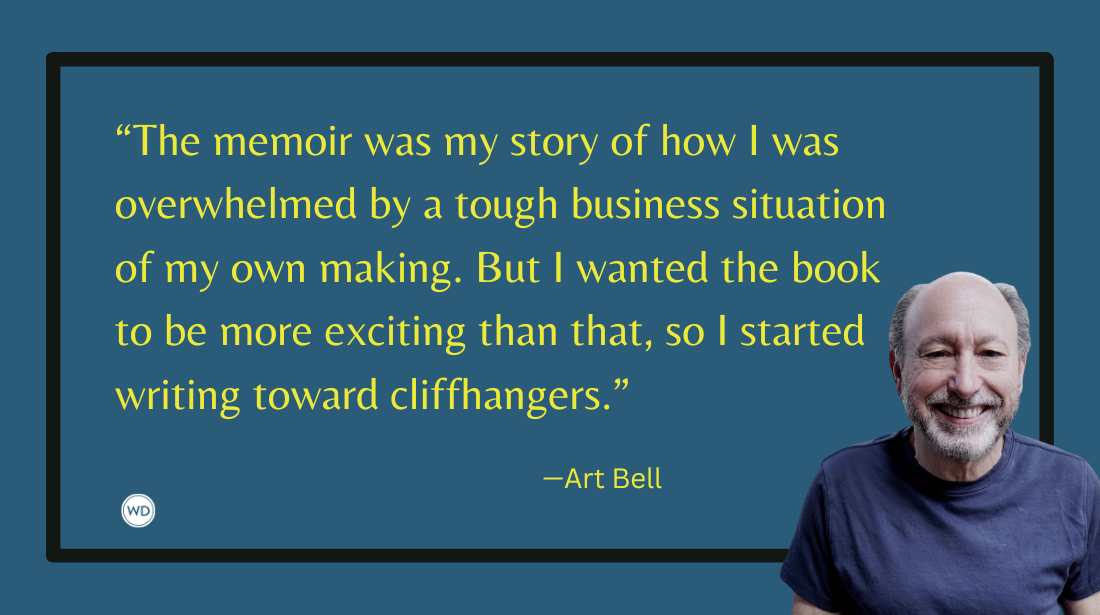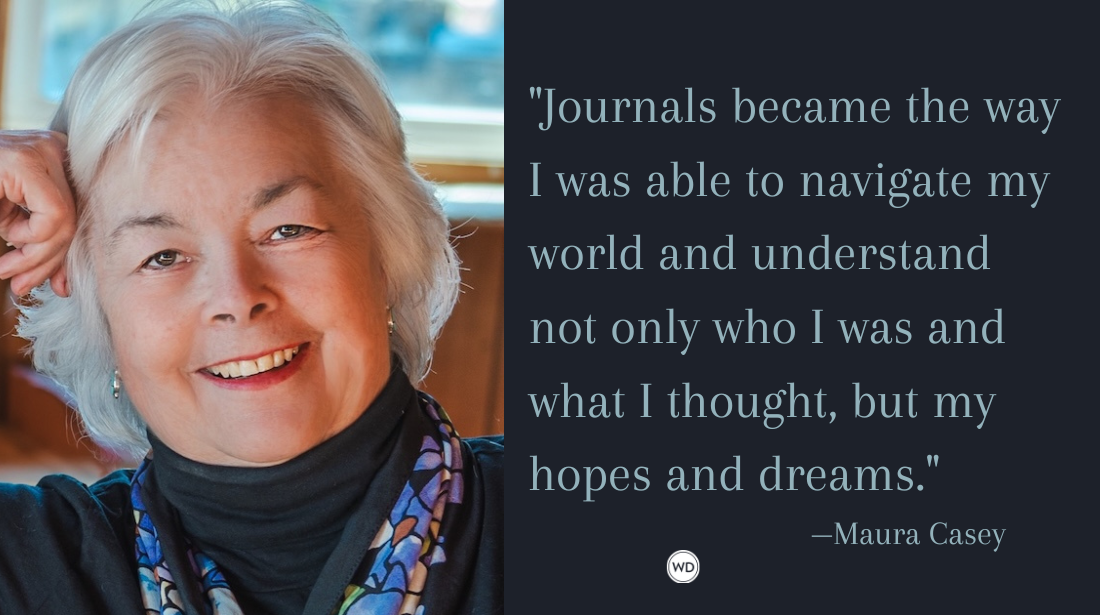Want to Write a Column? Here are 7 Key Tips You Need to Know
A quality column takes consistent effort, thought, and much rewriting. My experience writing several columns and the advice of several column writers I interviewed pinpoint seven of the most important and challenging considerations.
At pizza fests or cocktail parties, you love tossing off, eyes modestly lowered, “Oh, I’m a regular columnist for Extreme Quilting.” But if you’ve been invited or want to start a column and continue basking in such glory, realize what you’ve taken on. A quality column takes consistent effort, thought, and much rewriting. Experienced column writers know this. My experience writing several columns and the advice of several column writers I interviewed pinpoint seven of the most important and challenging considerations.
7 Tips to Write a Column
1. Produce on schedule.
The editor plans the layout to accommodate your column and counts on you to fill a certain space. If you have to beg occasionally for an extension, it may be granted, but don’t make this a habit. Resist frequent email or text excuses with unimpeachable justifications for not delivering on time or at all (“My labradoodle ate the hard disk”). You do not want to promise something you can’t deliver.
The strictness of outside deadlines can help—you stop thinking about which part of the garage to attack and instead push yourself to your desk. Columnist Gaie Sebold (“Errata”) advises, “Set daily reminders—at work, at home, post-its on the cat. I do all these (except maybe the cat), and I’ve still managed to miss deadlines.”
2. Stay interesting.
As in our other writing, we can become repetitive and predictable in topics and writing style. Pay attention to your penchants! We all have favorite words and almost automatic constructions. Time and distance between drafts help mightily (see below, #3). The more you stay interesting, the more readers you’ll have, the more copies and advertising the publication will sell, and the more editors will feel they made a great choice with your column.
In addition to style variations, to keep readers reading, the columnists I spoke with suggest several strategies. Some post rotating subjects or invite “guest” columns. Others comb the news on their topic to bounce off. For my Absolute Write column “The Starbucks Chronicles,” I found inspiration from several business articles about Starbucks’ ups, downs, and changes of emphasis. I applied the business principles to helping other writers. For example, opening more Starbucks’ equaled writing more; great, customized coffee equaled staying true to one’s vision.
Veteran columnist Dennis Hensley (Advanced Christian Writer, Sales Builder, Writers’ Journal) suggests we combat style-and-subject fatigue by alternating our interests: “I was a book and music columnist, a business columnist, then a motivation columnist, and with it all, a writing columnist.”
3. Allow time for each column to “cook.”
A column of 500 or 1,000 words may sound easy to dash off. But you want quality, don’t you? Treat each column like a self-contained gem; give it the same time and attention you’d lavish on your best short story.
If your column doesn’t quite make the word count, you may be tempted to pad short text. Conversely, if you’re over the word count, you may cut unthinkingly to squeeze the column into the required space. How to decide what’s important? The answer, says Dennis Hensley, is “take-away value. If readers are giving me their attention, I need to give them something of value in return.” So, to make sure you are incorporating value, use the time-honored advice that applies to any writing: let the column “sit” for a day or two between drafts. You’ll come back with a new editorial eye and fresher phrases.
4. Realize the column reveals your real self.
In a novel or even nonfiction, you can “hide” somewhat. In a column, you and your views are hanging out there. Gaie Sebold’s column hilariously chronicled her daily life. But she admits, “I sometimes wish I’d been a teensy bit less revealing about my inadequacies as a writer and human being.”
The self-exposure, though, is often what keeps readers coming back and nodding and chuckling in recognition. They’re comforted that someone in print is just like them. Erma Bombeck was the queen of laugh-out-loud self-exposure. Many popular columns today, especially on parenting and its glories and terrors, follow her model. So, another truism: the more we courageously delve into and share our inner selves and outer gaffes, the more we touch the hearts of others.
IndieBound | Bookshop | Amazon
[WD uses affiliate links.]
5. Choose your publications.
A column is, after all, a great credit. But use judgment about where you place your column. Sometimes a periodical “falls apart or becomes sullied for some reason,” notes Hope Clark (“Editor’s Piece of Mind”). The editor may be about to retire, and you have no guarantees that the next editor will embrace a similar editorial vision or policy or will even want you to continue your column. Sometimes the entire publication is shrinking (unfortunately the case with many today), and, after just a few entries, your column could be phased out. Carefully select your publication(s). You’ll be glad you did.
6. Guard and apportion your time.
Like any other piece of writing, your column deserves time (see #3 again). Allow the time you really want to give it. But know too that your other writing time decreases. Prolific novelist Aaron Lazar (“Seedlings”) warns that the column, especially as it gets known, can seriously cut into “your ‘pure’ writing time.”
But consider too the benefits. In addition to the column credit, any writing helps your “major” writing. The column offers additional publicity for your other writing works. Your column bio can include your website and a display of your book cover(s). Column readers, curious about the rest of your writing life, will tend to explore your sites and books, leading to more sales for you. The column invites reader feedback, and some readers are radio and blog hosts seeking interesting guests. And the column helps you attract invitations for speaking and interviews.
7. Be alert to unwanted “friends.”
Readers identify with us through our columns, and of course, we want them to (see #4). But they can take too much for granted and get too chummy. Paula Morrow (“Like a Child”) recalls that readers often ask her for free manuscript critiques. Christina Hamlett (“Effective Screenwriting”) gets emails from aspiring writers who “have read everything you have to say.” They’re sure “this suddenly qualifies them to be your new best friend.”
When you respond to such readers, be polite, respectful, and firm. You’re glad for their attention but want to maintain your professional boundaries. In your response, describe your editorial services, if you offer them, and refer readers to your site. Invite them to email or call to discuss their needs and your fees. Such replies will help you practice your professionalism and remind yourself of what you do and don’t.
* * * * * *
You may not be completely deterred by these seven cautions when you’re invited to write a column or write a pitch to land one. But recognize the cautions before you consent. With knowledge of the negatives, you’ll choose your venues more wisely, give your column the proper time and attention, and fulfill your promises. Then you’ll be proud of the column, reap its rewards, and at parties and barbecues, with delicious faux modesty, you’ll boast to everyone that you write a column.
Author, editor, dissertation and writing coach, and spiritual counselor Noelle Sterne has published over 300 pieces in print and online venues, including Author Magazine, Chicken Soup for the Soul, Children’s Book Insider, Funds For Writers, Graduate Schools Magazine, GradShare, InnerSelf, Inspire Me Today, Pen & Prosper, Romance Writers Report, Textbook and Academic Authors Association, Transformation Magazine, Unity Magazine, Women in Higher Education, Women on Writing, Writer’s Digest, and The Writer. She has also published pieces in anthologies, has contributed several columns to writing publications, and has been a volunteer judge for Rate Your Story. With a Ph.D. from Columbia University, Noelle has for 30 years assisted doctoral candidates to complete their dissertations (finally). Based on her practice, her handbook addressing dissertation writers’ overlooked but very important nonacademic difficulties was published in September 2015 by Rowman & Littlefield Education. The title: Challenges in Writing Your Dissertation: Coping with the Emotional, Interpersonal, and Spiritual Struggles. In Noelle's previous book, Trust Your Life: Forgive Yourself and Go After Your Dreams (Unity Books, 2011), she draws examples from her academic consulting and other aspects of life to help readers release regrets, relabel their past, and reach their lifelong yearnings. Visit Noelle at her website: trustyourlifenow.com.








